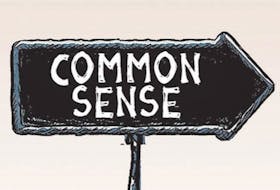Our federal immigration minister Ahmed Hussen said recently “The question is: Why do we need immigration? Well, five million Canadians are set to retire by 2035. And we have fewer people working to support seniors and retirees,”
Is he on the right track when it comes to higher levels of immigration being needed to support our seniors and retirees and offsetting our aging work force? Not really.
David Todd of Postmedia noted that most immigrants arrive here with dependents, including non-working children and spouses — and subsequently parents and grandparents, who in turn join the same ranks of seniors and retirees to be supported.
As one economist joked, the only way immigration alone could better support the needs of the country’s aging seniors and retirees would be if we exclusively brought in only 15-year-old orphans! That’s because it would take 50 productive years for the teens to reach retirement age and, as orphans, they wouldn’t be bringing in any parents or grandparents!
To further complicate things, immigration minister Hussen, in a recent announcement in Surrey, which has a large population of Indo-Canadian immigrants, boasted of expanding the family reunification program, which adds to the challenge of supporting the population of seniors and retirees.
Hussen proudly proclaimed the Liberals are raising the annual number from 5,000 to 20,000 because “we recognize that parents and their children and their grandchildren just want one thing: they just simply want to be together and they don’t want to be kept apart. And the faster we can do that, the better.”
This a laudable humanitarian objective and one that may be wise and necessary to attract the younger demographic to settle and work here, but it highlights the problem we should be trying to solve here, and it is not reducing the proportion of older folk in our communities, but growing a younger, qualified workforce.
Canada’s business-oriented C.D. Howe Institute has also produced a report showing Ottawa would have to bring in 1.4 million immigrants a year for decades to counteract the country’s declining birthrate and the retirement of workers. That would be a rate four times higher than the 2018 historical record of 321,000.
Canada’s declining birth rate is a major factor that must be recognised. It has been steadily falling over the last several decades: 1971 was the last year when the average number of children matched the 2.1 replacement level needed for the population to renew itself, without being bolstered by immigration. And, as of last year, Canada was way down the fertility list at 174th of the top 200 countries in the world.
One of the major reasons people are having fewer children is a combination of circumstances and biology. More women are choosing to start a family later in life, compared to earlier generations. In the 1960s, for instance, the average age for a first birth was about 22. Today, that age has been pushed to 30 and beyond.
Are there more effective ways than immigration to offset Canada’s low birthrate, satisfy growing workforce retirements, and the fact people now live on average to 82?
McMaster University economist Byron Spencer offers a partial solution: “The effects of population aging on per capita income could be offset in the medium term by later retirement and, in the longer term, by growth in productivity.” The C.D. Howe Institute agrees.
To that end the federal Conservatives, while keeping immigration rates steady, years ago announced their intention to follow the lead of Denmark, Australia, Britain, Finland, the U.S. and other countries and gradually lengthen the age of eligibility for such things as Old Age Security from 65 to 67.
However, for their own reasons, the Liberals killed this plan to extend the retirement pension eligibility age, and instead opted for increased immigration as the solution, which may well turn out to offer much of the relief we will need.
Alan Walter is a retired professional engineer living in Oxford. He was born in Wales and worked in Halifax. He spends much of his time in Oxford, where he operates a small farm. He can be reached at alanwalter@eastlink.ca.

![['Did You Know That with Alan Walter']](https://saltwire.imgix.net/did-you-know-that-with-alan-walter-3009037.jpg?cs=srgb&fit=crop&h=568&w=847&dpr=1&auto=enhance%2Cformat%2Ccompress)







